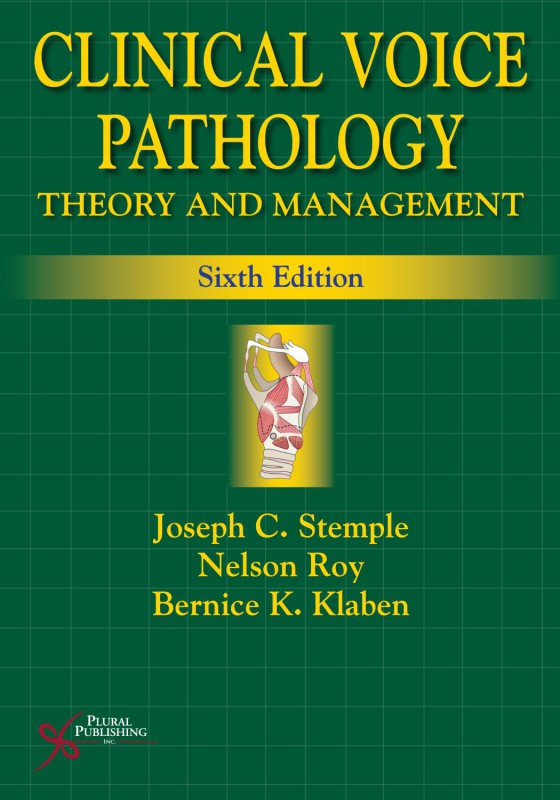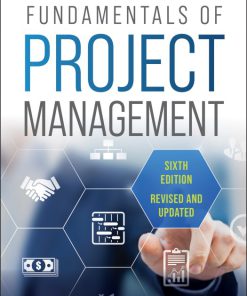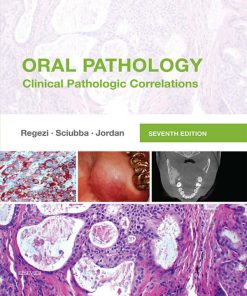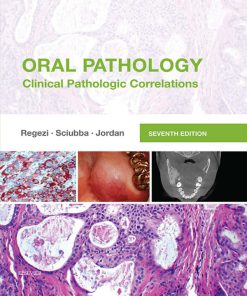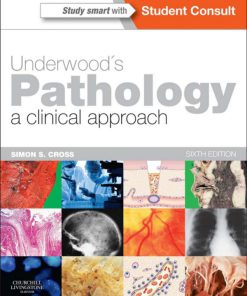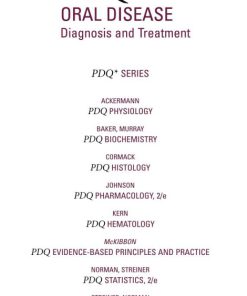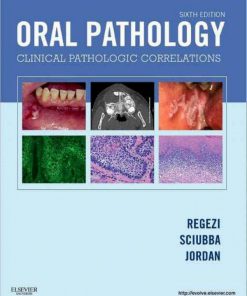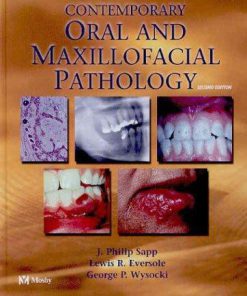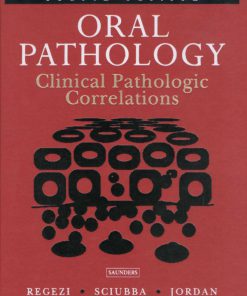Clinical Voice Pathology Theory and Management 6th Edition by Joseph Stemple,Nelson Roy,Bernice Klaben 163550029X 9781635500295
$50.00 Original price was: $50.00.$25.00Current price is: $25.00.
Authors:Joseph C. Stemple, Nelson Roy; Bernice Klaben , Series:Pathology [301] , Author sort:Joseph C. Stemple, Nelson Roy & Klaben, Bernice , Languages:Languages:eng , Published:Published:Nov 2018 , Publisher:Pural Publishing
Clinical Voice Pathology Theory and Management 6th Edition by Joseph Stemple,Nelson Roy,Bernice Klaben – Ebook PDF Instant Download/Delivery.9781635500295,163550029X
Full download Clinical Voice Pathology Theory and Management 6th Edition after payment
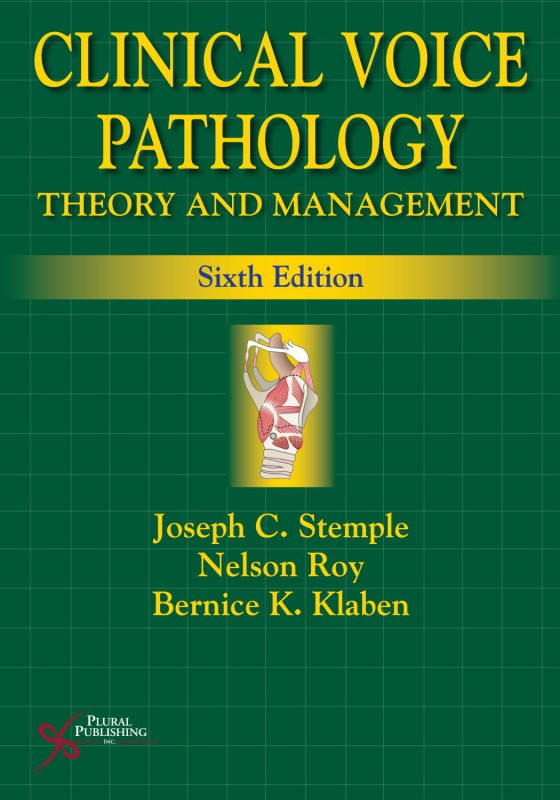
Product details:
ISBN 10: 163550029X
ISBN 13: 9781635500295
Author:Joseph Stemple,Nelson Roy,Bernice Klaben
NOW IN FULL COLOR! More than any previous edition, this new book includes major changes to benefit both the student and the instructor!
A classic work, now in its sixth edition, Clinical Voice Pathology: Theory and Management is a compilation of the authors’ vast clinical and research experiences and addresses a considerable range of voice disorders in various populations and from various etiologies including medical, environmental, social, psychological, occupational, and idiopathic threats to vocal health. The text continues to be organized for the graduate speech-language pathology student and instructor, building the foundational knowledge necessary to evaluate and treat voice disorders including history and common causes of voice disorders, anatomy and physiology of voice production, pathologies of the vocal mechanism, and an extensive array of evaluation and management approaches. In addition, the text continues to provide background in caring for the professional voice and those patients presenting with head and neck cancers.
New to the Sixth Edition
- A new chapter introducing the SLP’s responsibilities with trach and vent patients
- Updated references throughout the text to reflect the current state of clinical research in evaluation and treatment of voice disorders
- Expanded voice therapy chapter including new evidence-based management approaches
- Use of ‘Call Out’ boxes throughout the text to highlight cases, encourage additional thought, and suggest additional readings
- Full color throughout the text including new figures and artwork to enhance learning and understanding of the material
- A PluralPlus companion website with additional content including videos of laryngeal pathologies and instructional PowerPoint lectures.
Whether a typical voice user, occupational voice user, elite vocal performer, head and neck cancer patient, or an individual who has lost the ability to communicate competently and confidently due to a detrimental voice change, each patient presents a unique diagnostic dilemma: how best to return the voice to its optimal condition? This text thoroughly prepares the speech-language pathology student to answer this question through a systematic development of the knowledge base necessary to evaluate and manage voice disorders.
With numerous full-color images, multiple case examples, and a companion website of additional instructional material, Clinical Voice Pathology: Theory and Management, Sixth Edition, not only maintains but significantly improves on the standards set by its previous editions as the primary text for a graduate level course in clinical voice disorders.
Clinical Voice Pathology Theory and Management 6th Table of contents:
1. Voice: A Historical Perspective
Introduction
Definition of a Voice Disorder
Role and Skills of the Speech-Language Pathologist
Ancient History
Folklore Remedies
Egyptian Papyri
Hindu Writings
Hippocrates
Aristotle
Claudius Galenus
The Renaissance
The 17th to 19th Centuries
The Laryngeal Mirror
Further Advancements
Voice Therapy
Clinical Voice Pathology
Artistic and Scientific Ingredients of Voice Pathology
Summary and Concluding Remarks
References
2. Anatomy and Physiology
Anatomy
The Laryngeal Valve
Respiration for Phonation
Vocal Tract Resonance
Structural Support for the Larynx
Hyoid Bone
Laryngeal Cartilages
Muscles
Muscles for Respiration: Inspiration and Exhalation
Laryngeal Muscles
True Folds, Ventricular (False) Folds, and Ventricle
Vocal Fold Microstructure
Epithelium
Basement Membrane Zone
Lamina Propria
Vocalis Muscle
Blood Supply and Secretions
Neurologic Supply
Central Nervous System Control
Peripheral Innervation
Laryngeal Reflexes
Developmental Changes
Geriatric Vocal Folds
DNA Microarray Gene Expression Analysis
Physiology of Phonation
Theories of Vibration
Fundamental Frequency Control
Intensity Control
Phonation Modes and Voice Quality Control
Summary
References
3. Etiologies of Voice Disorders
Etiologies of Phonotrauma
Phonotrauma
Inappropriate Vocal Components
Medically Related Etiologies
Direct Surgery
Indirect Surgery
Chronic Illnesses and Disorders
Primary Disorder Etiologies
Personality-Related Etiologies
Environmental/Life Stress
Identity Conflict
Summary
References
4. Pathologies of the Laryngeal Mechanism
Prevalence of Voice Disorders
Pathology Classifications
Structural Pathologies of the Vocal Fold
Congenital and Maturational Changes Affecting Voice
Inflammatory Conditions of the Larynx
Trauma or Injury of the Larynx
Systemic Conditions Affecting Voice
Allergies
Nonlaryngeal Aerodigestive Disorders Affecting Voice
Psychiatric and Psychological Disorders Affecting Voice
Neurologic Disorders Affecting Voice
Movement Disorders Affecting the Larynx
Central Neurologic Disorders Affecting Voice
Other Disorders of Voice Use
Summary
References
5. The Diagnostic Voice Evaluation
The Management Team
Patient Profile
Referral Sources
Medical Evaluation
Voice Pathology Evaluation
Diagnostic Voice Evaluation
Referral
Reason for the Referral
History of the Problem
Oral-Peripheral Examination
Auditory-Perceptual Voice Assessment
Diagnostic Probes (Stimulability)
Focal Palpation of the Paralaryngeal Region
Patient Self-Assessment of the Voice Disorder
Impressions
Prognosis
Recommendations
Additional Considerations
Summary
References
Appendix 5–A. Sample Report
Appendix 5–B. Consensus Auditory-Perceptual Evaluation of Voice (CAPE-V)
Appendix 5–C. The Rainbow Passage
Appendix 5–D. Vocal Component Checklist
Appendix 5–E. Voice Handicap Index (VHI)
6. Instrumental Measurement of Voice
Clinical Utility
Basics of Technical Instruments
Microphones and Recording Environment
Digital Signal Processing
Acoustic Measures
Pitch Detection Algorithm
Fundamental Frequency
Intensity
Voice Range Profile, Phonetogram, and Physiologic Frequency Range of Phonation
Perturbation Measures
Signal (or Harmonic)-to-Noise Ratios
Spectral Analysis
Aerodynamic Measures
Calibration
Pressure, Flow, Resistance, and Ohm’s Law
Airflow Equipment
Flow Measurement
Subglottal Air Pressure Measurement
Phonation Threshold Pressure
Laryngeal Resistance
Inverse Filter
Laryngeal Imaging
Endoscopy
Stroboscopy
High-Speed Digital Imaging
Kymography
Criteria for Laryngeal Imaging
Endoscopic Imaging Techniques
Recording Protocol
Visual Perceptual Judgments
Electroglottography (EGG)
Laryngeal Electromyography (LEMG)
Normative Information
Electrical Safety
Hygienic Safety
The Clinical Voice Laboratory
Caveats and Additional Considerations
Glossary
Acoustics
Aerodynamics
Imaging
References
Appendix 6–A. Joint Statement: ASHA and AAO-HNS
Appendix 6–B. Vocal Tract Visualization and Imaging: Position Statement
7. Survey of Voice Management
Voice Therapy Orientations
Hygienic Voice Therapy
Symptomatic Voice Therapy
Psychogenic Voice Therapy
Physiologic Voice Therapy
Eclectic Voice Therapy
Case Study 1: Representing Voice Therapy Orientations
Hygienic Voice Therapy
Treatment Strategies for Vocally Traumatic Behavior
Vocal Hygiene Therapy Approaches
Case Study 2: The Homemaker
Case Study 3: The Noisy Job Environment
Case Study 4: The Public Speaker
Case Study 5: Phonotrauma in Children
Case Study 6: Can We Always Expect Success?
Hydration
Confidential Voice
Symptomatic Voice Therapy
Therapy Approaches for Respiration
Therapy Approaches for Phonation
Therapy Approaches for Resonance
Therapy Approaches for Pitch
Case Study 7: The Pseudoauthoritative Voice
Case Study 8: The Voice Saver
Case Study 9: Emotional Voice Changes
Voice and Communication Modification for Gender Diverse People
Therapy Approaches for Loudness Modification
Therapy Approaches for Rate Modification
Treatment Approaches for Laryngeal Area Muscle Tension
Case Study 10: Ventricular Phonation
Psychogenic Voice Therapy
Functional Aphonia/Dysphonia
Functional Falsetto
Vocal Cord Dysfunction (VCD)
Physiologic Voice Therapy
Case Study 11: Laryngeal Muscle Imbalance
Case Study 12: The Postsurgical Patient
Case Study 13: The Aging Voice
The Semi-Occluded Vocal Tract
Speech-Based SOVT Therapy
Accent Method of Voice Therapy
Flow Phonation
Lee Silverman Voice Treatment (LSVT)™
Phonation Resistance Training Exercise (PhoRTE™)
Conversation Training Therapy (CTT)
Team Management of Specific Laryngeal Pathologies
Vocal Fold Cover Lesions
Laryngopharyngeal Reflux (LPR) and Gastroesophageal Reflux Disease (GERD)
Unilateral Vocal Fold Paralysis
Case Study 14: Unilateral Vocal Fold Paralysis
Spasmodic Dysphonia
Organic (Essential) Tremor
Successful Voice Therapy
References
Appendix 7–A. Phrases and Sentences Graduated in Length
8. The Professional Voice
Overview
The Professional Voice User
History
The “At-Risk” Status
Professional Roles
The Otolaryngologist
The Voice Pathologist
The Producer
The Agent or Manager
Clinical Pathways
Otolaryngology-Voice Pathology-Voice Pedagogy
Voice Pedagogy-Otolaryngologist-Voice Pathology
Voice Pedagogy-Voice Pathology-Otolaryngology
Otolaryngology-Voice Pedagogy
Voice Pathologist-Voice Pedagogy
Vocal Types and Vocal Range
Categories of Singers
Vocal Registers
Common Etiology Factor
Personality Factor
Phonotrauma
Drugs
Hydration
Common Pathologies
Acute and Chronic Noninfectious Laryngitis
Vocal Nodules
Contact Ulcers and Granulomas
Gastroesophageal Reflux Disease/Laryngopharyngeal Reflux
Voice Fatigue
Vocal Fold Hemorrhage and Vascular Pathologies
Clinical Assessment of the Vocal Performer
Supportive Training and Techniques
Alexander Technique
The Linklater Method
The Feldenkrais Method
The Lessac System
Estill Voice Training
Summary
Glossary of Terms Used in Singing
References
9. Rehabilitation of the Laryngectomized Patient
Overview
Incidence of Laryngeal Cancer
Etiology
Symptoms of Laryngeal Cancer
Medical Evaluation
Staging and Tumor-Node-Metastasis Classifications
Lymph Node Distribution
Treatment Options
Conservation
Combined Treatments
Radiation Therapy
Surgery
Concurrent Chemoradiotherapy
Methods of Reconstruction
Need for Follow-up Treatment
Multidisciplinary Rehabilitation Team
Special Concerns of the Laryngectomized Patient
Communication
Physical Concerns
Psychosocial Concerns
Speech Rehabilitation
Artificial Larynges
Esophageal Speech
Surgical Prosthetics
Role of the Speech-Language Pathologist and Surgical Prosthetics
Patient Evaluation
Patient Fitting
Independent Care
Maximizing Communication
Hands-Free Speaking Valve
Summary
Helpful Websites on Head and Neck Cancers
References
10. Artificial Airway and Mechanical Ventilation
Introduction
Artificial Airway
Nasopharyngeal Airway
Oropharyngeal Airway
Laryngeal Mask Airway
Endotracheal Intubation
Tracheotomy
Tracheostomy Complications
Communication Options for Patients with a Tracheostomy
Mechanical Ventilation
Mechanical Ventilation Terminology
Strategies for Restoring Verbal Communication for Ventilator Dependent Patients
Noninvasive Ventilation Speech Challenges
Invasive Ventilation Speech Challenges
People also search for Clinical Voice Pathology Theory and Management 6th:
clinical voice pathology theory and management pdf download
clinical voice pathology theory and management
clinical voice pathology theory and management pdf
clinical theory examples
• clinical voice pathology theory and management 6th edition
You may also like…
eBook PDF
Underwood Pathology A Clinical Approach 6th Edition by Simon Cross ISBN 0702046728 9780702046728

